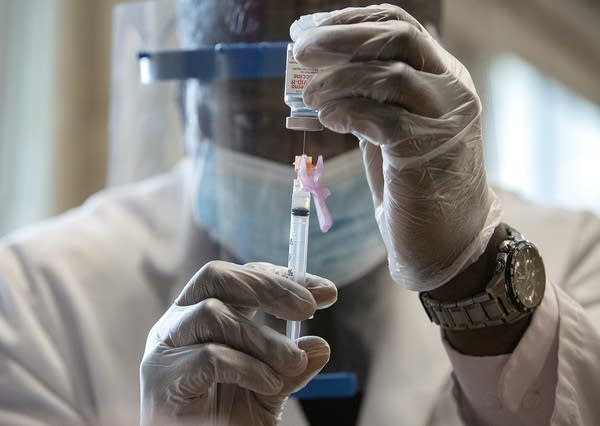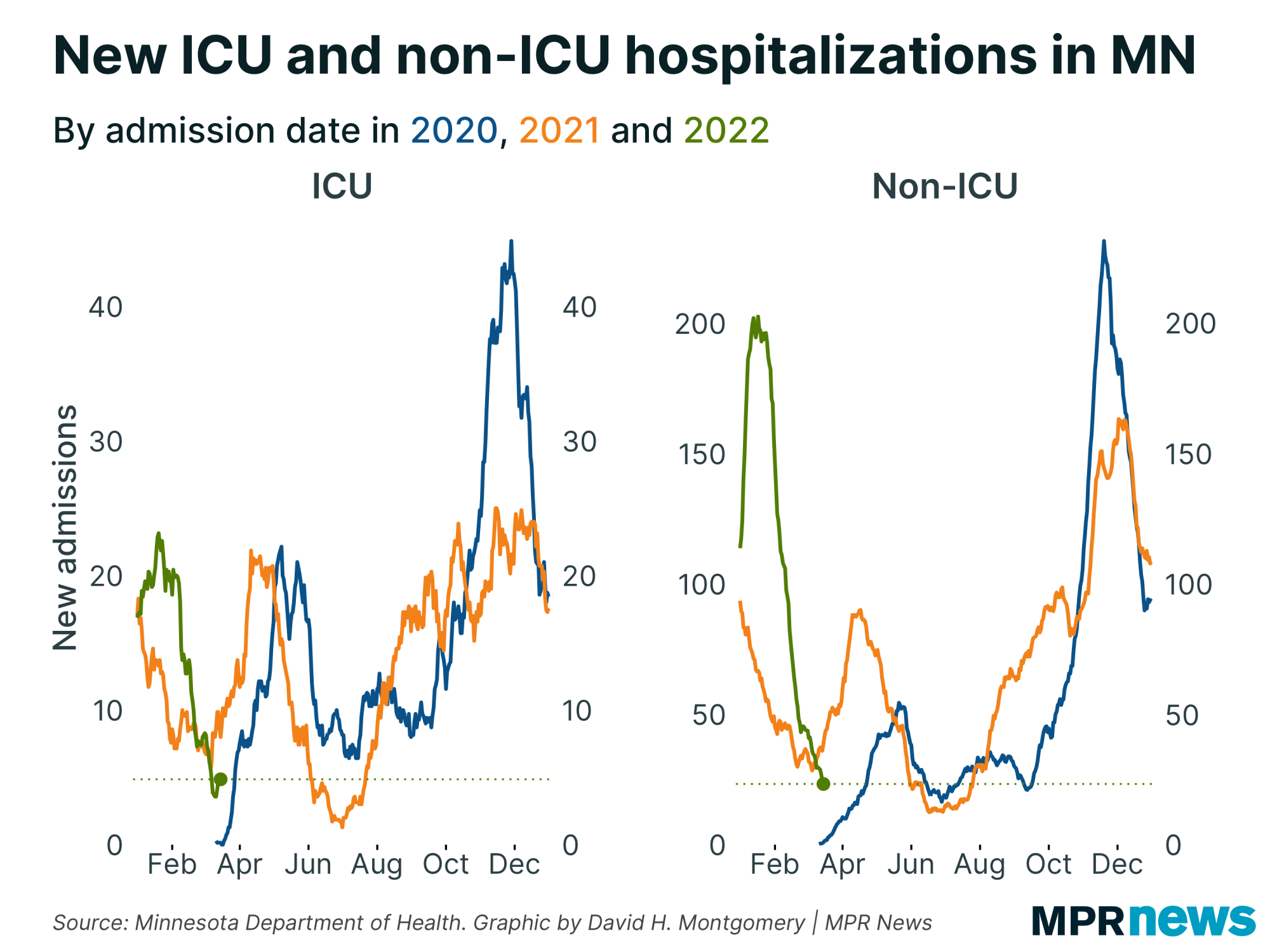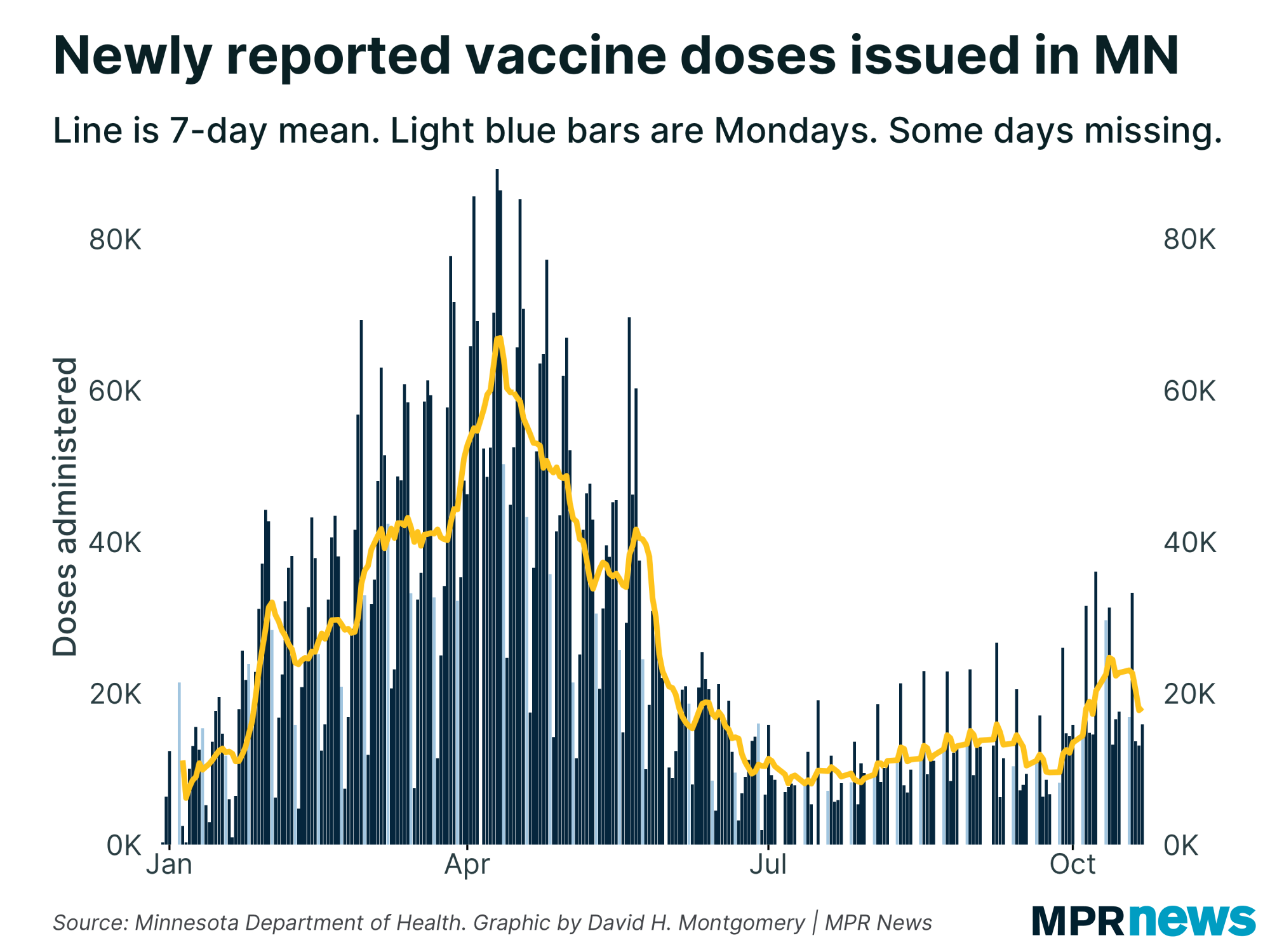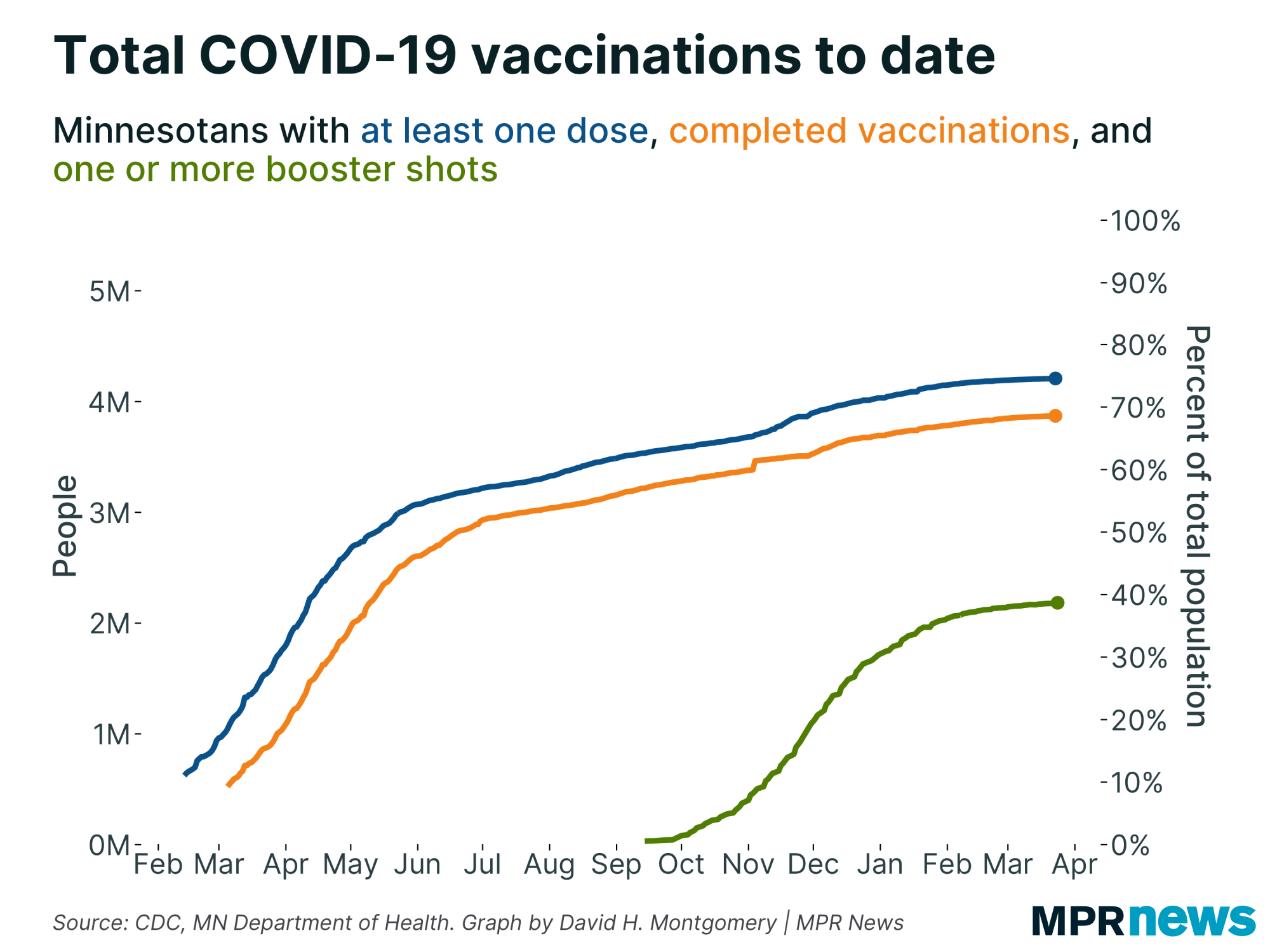Feb. 3 update on COVID-19 in MN: Trends stay solid, but vaccination pace slows

Go Deeper.
Create an account or log in to save stories.
Like this?
Thanks for liking this story! We have added it to a list of your favorite stories.
Three things to know:
Active cases down to late September levels
Vaccination pace lagging after last week’s jump
One in 5 Minnesotans age 65 and older have received at least one vaccine dose
Updated: 8:17 p.m.
Minnesota’s COVID-19 trend lines continue to show the state on the right track — new cases, active caseloads and hospitalizations are all angling down. The pace of vaccination, though, remains frustrating.
The state Health Department on Wednesday reported 7,825 known, active cases — the lowest it’s been since late September and down significantly from late November when the count hovered around 50,000.

The numbers also continue to look good on hospitalizations — 379 Minnesotans were hospitalized with COVID-19 as of Tuesday, with 77 needing intensive care. Those ICU cases are at their lowest point since Sept. 18.

As the disease metrics improve, however, vaccinations continue to lag this week following last week’s jump. It’s not clear yet if the past few days are an anomaly.
Turn Up Your Support
MPR News helps you turn down the noise and build shared understanding. Turn up your support for this public resource and keep trusted journalism accessible to all.

On Tuesday, state officials said it could take up to four months to vaccinate Minnesotans 65 and older if the feds don’t deliver more vaccine faster; about 20 percent of that population has received at least their first dose.
As of Monday, more than 458,000 Minnesotans received at least one dose of COVID-19 vaccine — about 8.3 percent of the state’s population.
Meanwhile, vaccinations in nursing homes in the state are onto their second shots, state officials say. Most health care workers and many educators have also received shots.
The generally hopeful outlook is tempered now by concerns over new virus strains arriving in the United States. All three known new COVID-19 variants have now been confirmed in the U.S., including a case of the Brazilian strain identified recently in Minnesota.
“There’s still a lot of information that we don’t have about these variants,” Kris Ehresmann, the state’s infectious disease director, told reporters Monday as she cautioned the state wasn’t out of the woods yet.
Beyond the new strains, she noted the state is starting to see outbreaks since it began easing gathering restrictions at bars and restaurants, as well as youth sports. “Although our case numbers are down, that doesn’t mean we’re feeling comfortable that everything’s great and we can open up,” Ehresmann said.
Twenty-four newly reported deaths Wednesday raised Minnesota’s toll to 6,234. Among those who’ve died, about 63 percent had been living in long-term care or assisted living facilities; most had underlying health problems.

The state’s recorded 463,766 total confirmed or probable cases so far in the pandemic, including 669 reported Wednesday. About 97 percent of people have recovered to the point they no longer need to be isolated.

Cases spread across age groups, regions
People in their 20s still make up the age bracket with the state’s largest number of confirmed cases — more than 88,000 since the pandemic began, including more than 46,000 among people ages 20 to 24.

The number of high school-age youth confirmed with the disease has also grown, with more than 36,000 total cases among those ages 15 to 19 since the pandemic began.
Although less likely to feel the worst effects of the disease and end up hospitalized, experts worry youth and young adults will spread it unknowingly to older relatives and members of other vulnerable populations.
People can have the coronavirus and spread COVID-19 when they don’t have symptoms.
Caseloads are trending down across all regions of the state following a late December, early January blip.

Hot spots continue to pop up in rural counties relative to their population.

Caseloads still heaviest among people of color
In Minnesota and across the country, COVID-19 has hit communities of color disproportionately hard in both cases and deaths. That’s been especially true for Minnesotans of Hispanic descent for much of the pandemic.

Even as new case counts continue to fall from their late November, early December peaks, the data shows people of color continue to be hit hardest.
Distrust of the government, together with deeply rooted health and economic disparities, have hampered efforts to boost testing among communities of color, officials say, especially among unauthorized immigrants who fear their personal information may be used to deport them.
Similar trends have been seen among Minnesota’s Indigenous residents during the pandemic. Counts among Indigenous people jumped in October relative to population.
‘Everyone is going to have to be patient’ on vaccines
State public health leaders have been pleading for patience over the pace of COVID-19 vaccination.
“We are getting Minnesotans vaccinated safely and quickly as supplies come to us,” Ehresmann told reporters Tuesday. But “we just don’t have enough vaccine and everyone is going to have to be patient.”

The state’s federal vaccine allocation is rising. But given the current rate of shipments, Ehresmann said it would take 16 weeks to vaccinate Minnesotans age 65 and older along with the other priority populations that “we need to get through.”
She also warned people to be wary of phone scams that are now popping up, with people calling and offering to ship vaccines directly to residents or put them on a priority list for a fee. Those are all fraudulent.
“If they ask for your credit card, bank account or Social Security number … that’s a scam,” Ehresmann said.
Concerns continue to simmer over the speed of the effort — and the confusion it’s generated as people struggle to find out when and where they can get a shot.
This week, the state launched an online vaccine-finder website to help connect older Minnesotans to available supplies, but the site caused a surge that inundated some local providers who still didn’t have doses.

Deb Keaveny, a McLeod County pharmacist, said Monday she’d been flooded with calls from people trying to schedule their vaccinations since the new state website went live. Store operators did not get a heads-up the site was running, and the vaccine isn't yet flowing to pharmacies like the one she runs.
“When are you getting the vaccine? When can we book an appointment?” she said, ticking off the questions she’s being asked but can’t answer. “I feel tough for the people that are calling us because we don’t have the answers because we didn’t know that was going to happen.”
COVID-19 in Minnesota
Data in these graphs are based on the Minnesota Department of Health's cumulative totals released at 11 a.m. daily. You can find more detailed statistics on COVID-19 at the Health Department website.
Latest developments
Vaccination weekend set for Mpls. convention center
The state of Minnesota is launching a new, large-scale vaccination site at the Minneapolis Convention Center.
The state expects to vaccinate 9,500 people, including people 65 and older, teachers and child care providers, starting Thursday and through the weekend. Additional sites are opening in Duluth and southern Minnesota in coming days, and will remain open indefinitely.
The sites will be operated by Vault Health, which runs the state's saliva testing program.
Dan Feehan, a former Minnesota congressional candidate, is now leading Vault's national vaccine program, including in Minnesota.
"This is incredibly exciting. People are waiting and people are looking for an opportunity like this: Not just to get their vaccination, but to get it easily, efficiently and at a high enough through-put so we can get to a lot more people,” he said.
Vault Health randomly drew names for appointments from a list of people who pre-registered for slots during the initial rollout of the vaccine pilot program in January, Feehan said.
— Catharine Richert | MPR News
Top headlines
COVID-19 variants are bad news — the good news is, we know what works: Dr. Jon Hallberg says the public would be right to worry — these variants spread faster, which could overwhelm the health care system. Still, he said there is good news: Existing vaccines are still effective against them, though some are a little less so, and we already know how to prevent the spread. Masking up, washing our hands, social distancing and limiting trips outside the home still work.


